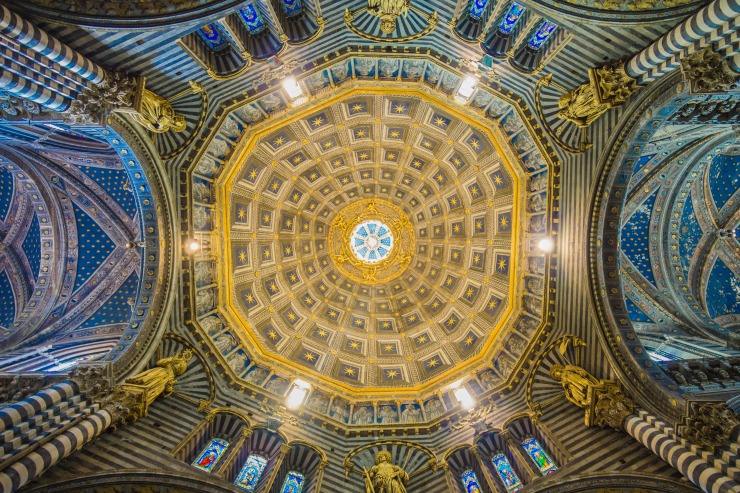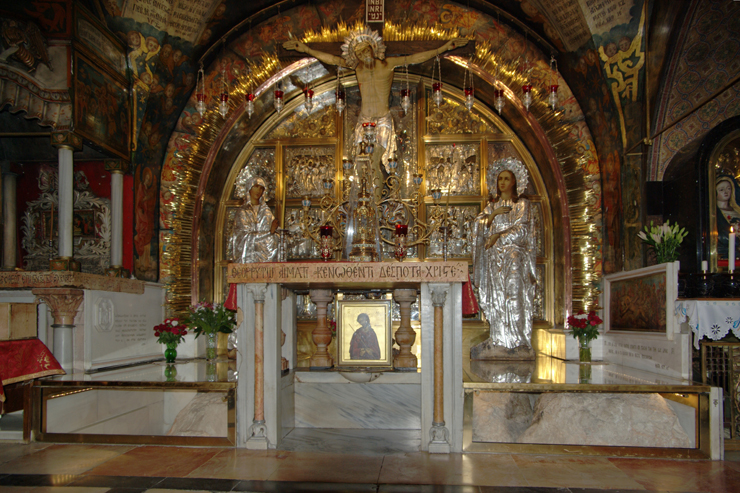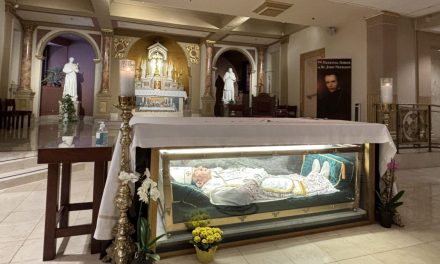I’m currently leading a pilgrimage in Italy, and one of my favorite parts of these pilgrimages—showing people the beauty of the Church—is often used by people who are looking to criticize the Church. Why does the Church have extravagant churches? Shouldn’t they sell all that art and gold and give the money to the poor?
At first glance, the critique does not sound too different from the critique of Judas, who wanted to reprimand Mary of Bethany for lavishly anointing Jesus’ feet with costly oil. “Why was this oil not sold for three hundred days’ wages and given to the poor?” (John 12:5) The evangelist is quick to point out that Judas didn’t really care about the poor. He wanted to take the money for himself. Jesus praises Mary’s sacrifice and affirms that she is correct to give her best to him.
But the question remains. There are people dying of starvation and beggars sitting at the doorsteps of these very churches. Shouldn’t the Church do something about that?
The Church does do something about that, of course. But the answer is not in selling our churches.
There are a multitude of reasons why it’s important to have beautiful churches. First and foremost, these churches are not meeting rooms or gathering spaces where an empty auditorium will suffice. A church is the house of God, where he dwells with his people. He deserves our best. Yes, God was laid in a manger in Bethlehem. But he also allowed his feet to be anointed with costly oil. We should give him the firstfruits, the most beautiful, the best we have to offer. The beauty of the church doesn’t have to come from gold and silver. Some of the most beautiful churches are small and humble. What matters is not the cost, but the beauty.
Walking into a church building—the house of God—should take you out of this earthly dimension and take you outside of space and time, raising your thoughts and mind to God. A church—whether it’s an ornate baroque basilica or a humble little stone church in the middle of the country—should be a little heaven to us. It is the place we encounter God.
In the Old Testament, we see very particular instructions for the construction of the ark of the covenant and the tabernacle. God asked the Israelites to use gold and silver and bronze and jewels- the best things they had. “Receive from among you contributions for the LORD. Everyone, as his heart prompts him, shall bring, as a contribution to the LORD, gold, silver, and bronze.” (Ex 35:5) Moses called for the artisans to come and construct the materials using their gifts and their talents. They brought their own jewelry; the women spun the finest wool. Everyone contributed their best possessions and their best talents.
Why? Because this was God’s house. This earthly dwelling was supposed to remind them that they are in the presence of the Godhead, and lift their minds to his heavenly dwelling.
We need to build beautiful churches because it is how we as creatures cooperate with the Creator! We take the material world he gave us—stone and wood and gold and silver—and use the talents and gifts and intellects he gave us, in order to express in some small way God’s own infinite beauty.
The beautiful churches that have been built throughout the centuries were built lovingly by people who gave what they could to honor God. These buildings aren’t vestiges of a powerful hierarchy looking to hoard gold. They are homes of Catholics of every walk of life, every socio-demographic, for thousands of years. When you look at the great cathedrals of Europe, like the Cathedral of Cologne, Chartres, or the Duomo in Florence, they often took hundreds of years to complete, by the hands and sweat of thousands of people. These men and women were building something they would never see complete. But they did it with love for God, who humbly resides there.
These churches belong to all of us. Everyone deserves access to beauty and beautiful things. These beautiful churches are open to all. Not everyone can afford the great art museums of the world. But anyone can come and worship, pray, and rest in these places and see the works of Raphael, Caravaggio, and Bernini.
A culture spends money and builds temples to the things it values. We have beautiful stores with marble floors and fountains. We have state of the art stadiums and office buildings. Give me a culture that builds beautiful churches instead.
















